But Thap Pagoda is a remarkable testament to Vietnam’s rich cultural heritage and the enduring influence of Buddhism in the country. This ancient Buddhist temple has captivated visitors for centuries with its stunning architecture, historically significant artifacts, and picturesque setting. But Thap Pagoda’s story is one of resilience, spiritual importance, and artistic mastery. This article journeys through the pagoda’s intricate history, its architectural marvels, and the lasting impact it has had on Vietnamese culture and religion.
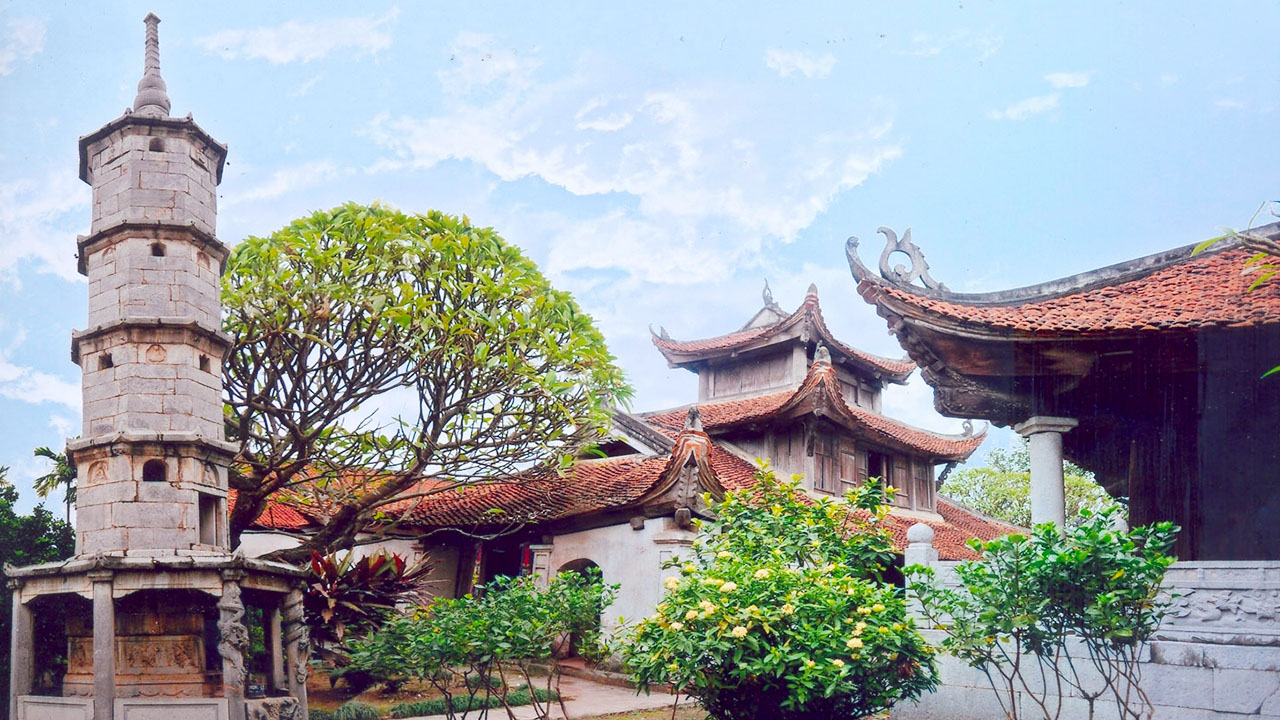
Introduction
A Brief History of But Thap Pagoda
First constructed in the 11th century during the Tran Dynasty, But Thap Pagoda’s origins are somewhat shrouded in mystery. While the exact founding date remains unknown, the pagoda has witnessed various renovations and restorations over the centuries, the most recent occurring between 1992 and 1996. The successive waves of renovations reflect both the changing architectural trends and the unwavering significance of the pagoda in Vietnamese spiritual and cultural life. From the Tran Dynasty to the Nguyen Dynasty, But Thap Pagoda has remained a focal point of religious activities in Northern Vietnam.
Location and Significance
Nestled in But Thap Hamlet, Dinh To Commune, Thuan Thanh District, Bac Ninh Province, the pagoda sits approximately 30 kilometers north of Hanoi Old Quarter. Located on the serene banks of the Duong River and surrounded by lush rice fields, But Thap Pagoda covers an impressive area of 10,000 square meters. The natural environment amplifies its serene and spiritual ambiance, becoming an integral part of its allure. Thousands of Buddhist pilgrims and tourists visit the site each year, drawn by its historical significance and the serene atmosphere that envelopes it.
Architectural Features
But Thap Pagoda is celebrated not only for its spiritual importance but also for its unique architectural design. It boasts a distinctive fusion of Vietnamese and Chinese architectural styles, which can be seen in its complex layout and intricate carvings. Key features include the 3.7-meter-tall wooden statue of the Bodhisattva Avalokiteshvara, known as the “Thousand-Armed, Thousand-Eyed” Buddha, created in 1656. Beyond this, the pagoda houses over 50 ancient Buddhist statues and artifacts, each meticulously crafted, making it a vibrant repository of historical art and culture.
The Pagoda’s Design and Construction
The Main Structure: The Stupa
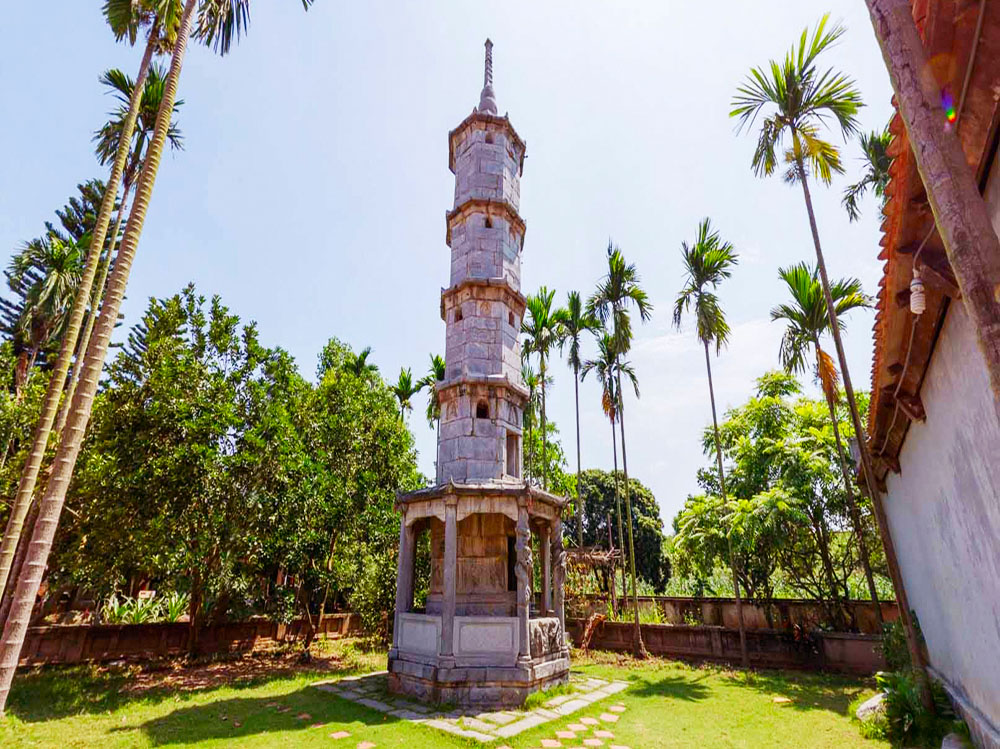
The central masterpiece of But Thap Pagoda is the Bao Nghiem Tower, a stone stupa that reaches 13.05 meters high and spans five floors. This stupa, often described as a pen pointing towards the sky, is an iconic symbol of the pagoda. The base of the tower is round with a diameter of 2.29 meters, and the five corners of each floor hold small bells that gently chime in the wind. These intricate details not only exemplify superior craftsmanship but also imbue the structure with a sense of calm and spirituality. Built in the 17th century, Bao Nghiem Tower is a marvel of both architectural design and spiritual symbolism.
The Surrounding Buildings and Structures
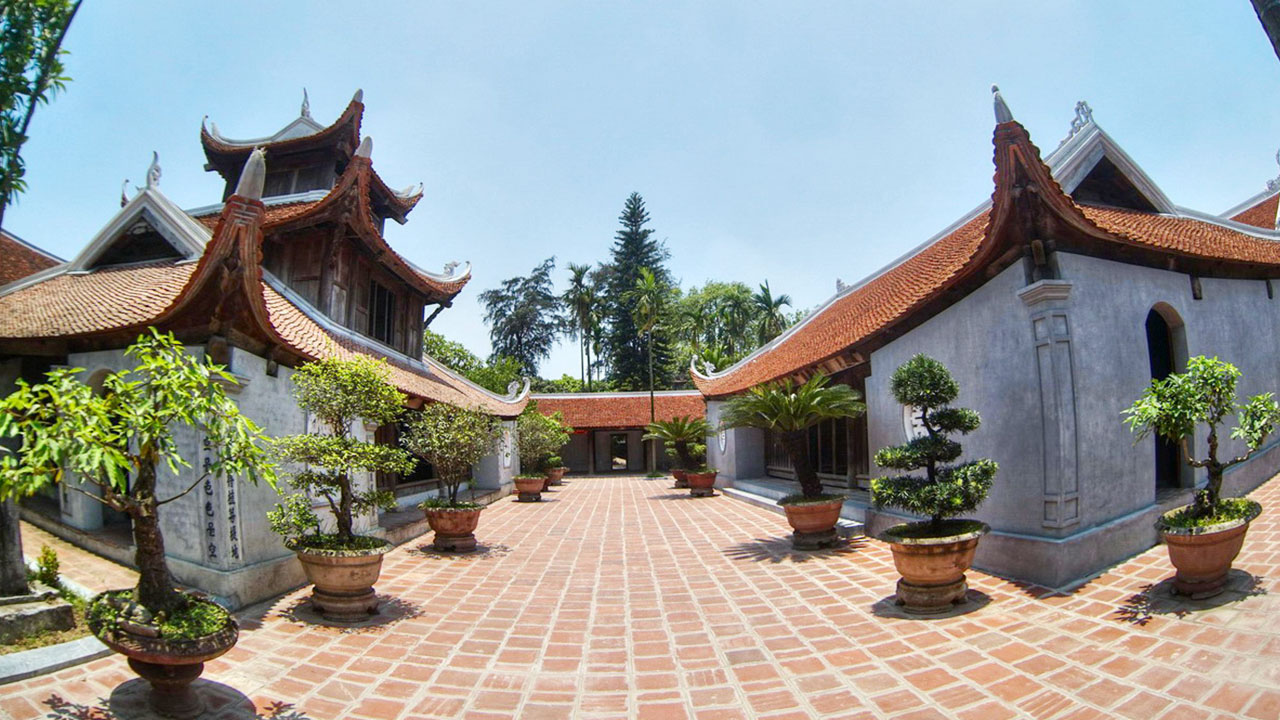
The But Thap Pagoda complex extends beyond just the central stupa. The site includes a two-story bell tower with eight roofs, the Front Hall, the Main Hall, and numerous shrines and pavilions. Each building varies in design but maintains a cohesive aesthetic that reflects the traditional “Noi Cong Ngoai Quoc” architectural style. This style involves two long corridors connecting the front and back buildings, forming a rectangular layout around the central structures akin to the Chinese character “Cong” for the inner layout and “Quoc” or “Khau” for the outer frame. Each part of the pagoda complex adds another layer of significance and beauty to the overall structure.
The Architectural Style and Influences
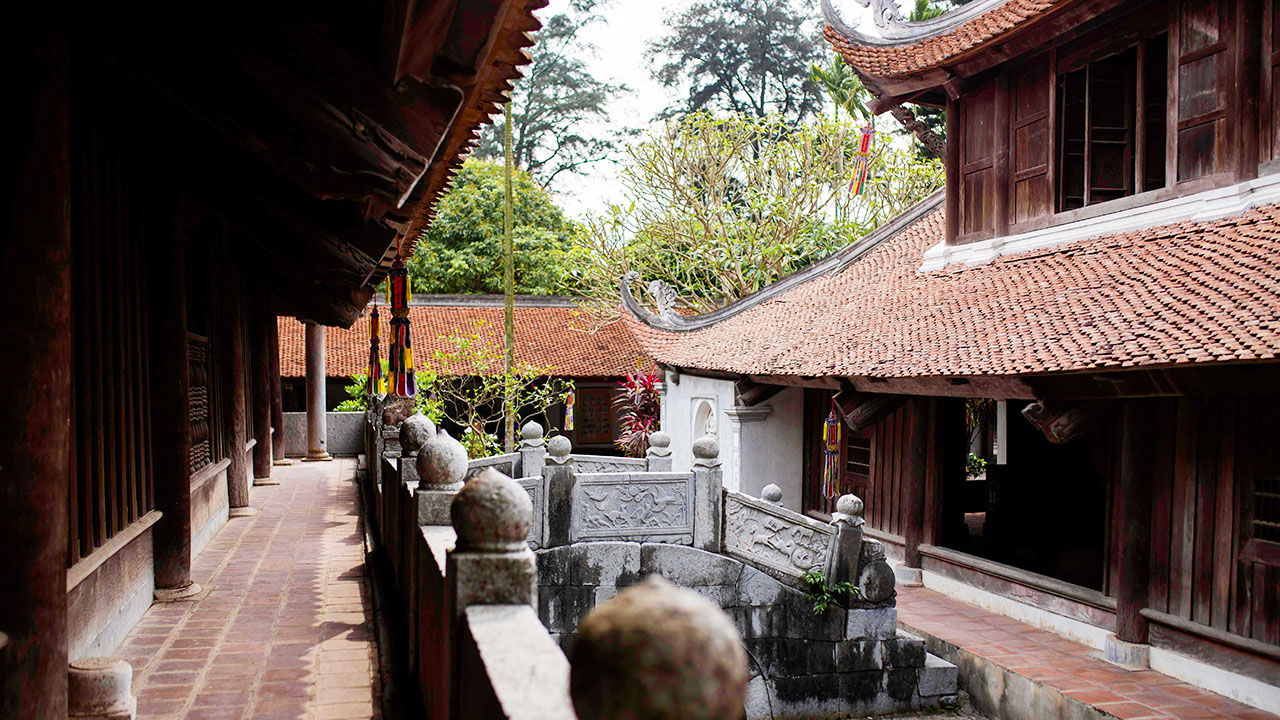
The harmonious blend of Vietnamese and Chinese styles is a cornerstone of But Thap Pagoda’s architecture. The influence is so profound that it can be likened to a beautiful tapestry weaving together different cultural threads. The “Noi Cong Ngoai Quoc” style not only ensures symmetry and balance but also enhances the pagoda’s spiritual ambiance. The pagoda’s two prominent white rock towers Ton Duc, standing at 10 meters, and Bao Nghiem, at 13 meters illustrate a perfect blend of functionality and aesthetics, contributing to the majestic yet tranquil appearance of the complex.
The Pagoda’s Role in Vietnamese Buddhism
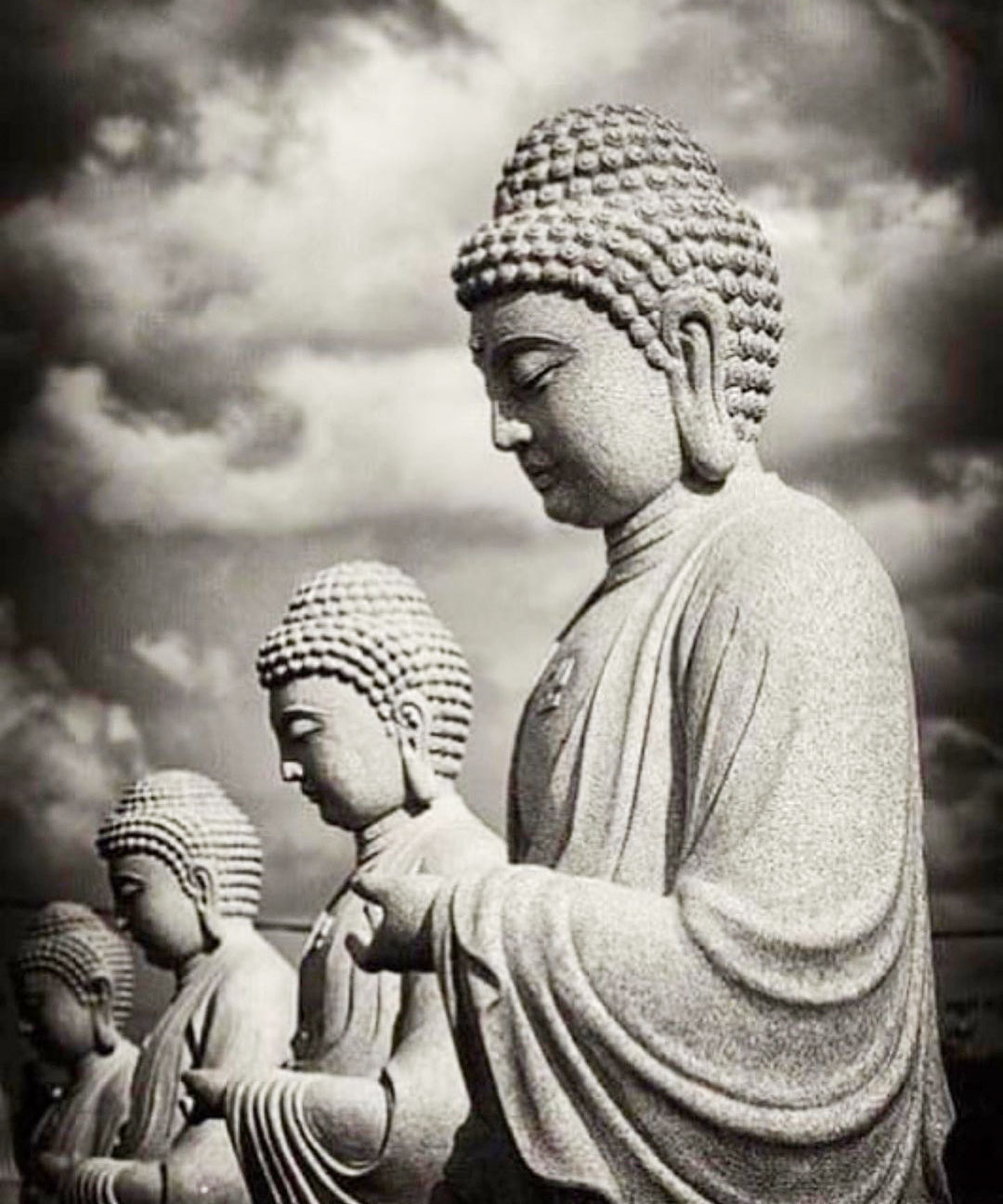
The History of Buddhism in Vietnam
Buddhism found its way to Vietnam as early as the 3rd or 2nd century BCE, arriving either through South Asia or China during the 1st or 2nd century CE. Over time, Mahayana and Theravada traditions left a significant imprint on Vietnamese Buddhism. These traditions, mediated through local adaptations, have become integral to spiritual practices and cultural identity in Vietnam.
The Pagoda’s Importance to the Local Community
But Thap Pagoda has been much more than just a religious site; it has served as a cornerstone for the local community. It offers a space for worship, meditation, and communal activities. In many ways, the pagoda serves as a sanctuary for the community, providing not just spiritual guidance but also acting as a venue for social welfare initiatives, educational programs, and various cultural events. This dual role as a religious and community hub underscores the pagoda’s multifaceted importance in the lives of local residents.
The Pagoda’s Role in Religious Practices
But Thap Pagoda holds an indispensable place in Vietnamese religious practices. It houses numerous relics and sacred objects associated with the Buddha, symbolizing enlightened minds and the ultimate goal of liberation in Buddhism. The pagoda’s architecture itself, with its three-part structure and dual-tiered roofs, resonates deeply with Buddhist and Confucian philosophies, representing fundamental elements like heaven, earth, and man. Annual festivals and regular Buddhist ceremonies further underline the religious significance of the site, attracting both devoted pilgrims and curious visitors.
The Pagoda’s Significance in Vietnamese Culture
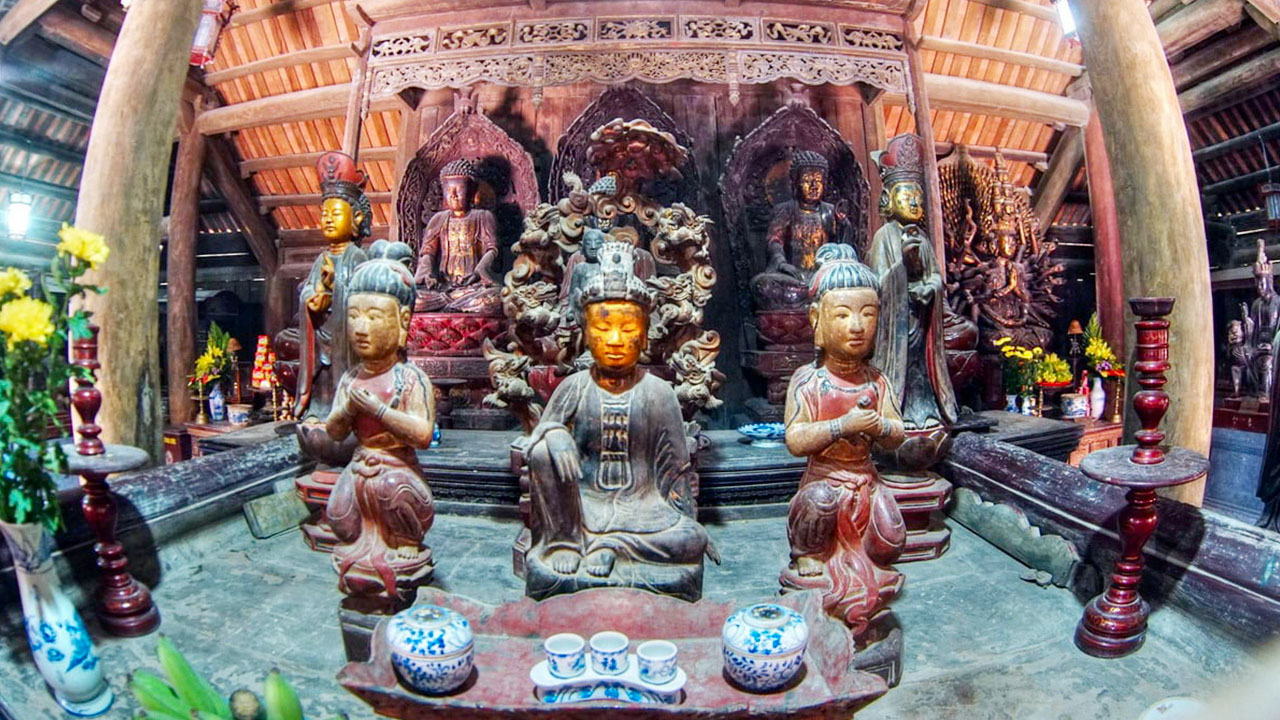
The Pagoda’s Symbolism and Meaning
In Vietnamese culture, But Thap Pagoda holds profound symbolic meaning. Its complex architecture, religious artifacts, and sacred statues serve as tangible embodiments of spiritual beliefs and philosophical ideologies. The pagoda’s most famous treasure, the “Thousand-Armed, Thousand-Eyed” Buddha, is a striking representation of compassion and enlightenment. Statues and architectural elements within the pagoda reflect a symbolic language that conveys deeper spiritual truths and cultural values.
The Pagoda’s Representation of Vietnamese Heritage
As one of the oldest and most revered pagodas in Vietnam, But Thap Pagoda is a crucial custodian of Vietnamese heritage. The pagoda has been designated a Special National Monument, underscoring its immense cultural and historical value. Its architecture, filled with intricate carvings and statues, speaks volumes about the artistry and craftsmanship of past eras. Furthermore, the pagoda’s unique blend of Vietnamese and Chinese architectural styles serves as a testament to Vietnam’s rich, multicultural history.
The Pagoda’s Influence on Vietnamese Arts and Literature
But Thap Pagoda has inspired numerous artistic and literary endeavors over the centuries. Its elegant design, set against the serene backdrop of the Duong River and lush rice fields, has found expression in poetry, paintings, and literature. The pagoda’s architectural marvels, particularly the “Thousand-Armed, Thousand-Eyed” Buddha, have become iconic symbols in Vietnamese art. Scholars have produced extensive works on the religious and artistic significance of the site, making it a focal point for cultural studies in Vietnam.
The Pagoda’s Preservation and Restoration
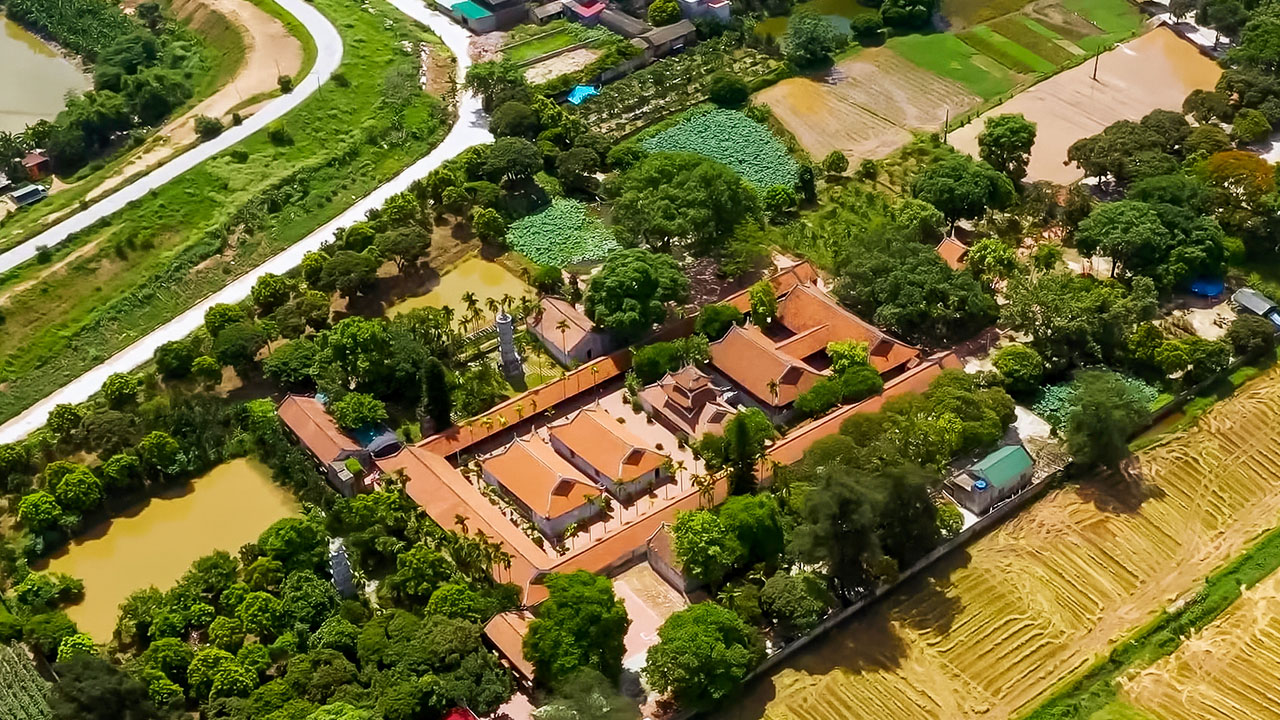
The Challenges of Maintaining the Pagoda
Maintaining an ancient structure like But Thap Pagoda presents several challenges. First and foremost is ensuring the integrity and authenticity of its original design. While renovations over the centuries have helped preserve the pagoda, each restoration carries the potential risk of altering its historical character. Additionally, protecting valuable cultural relics, such as ancient wooden statues and intricate stone carvings, requires advanced conservation techniques and environmental controls to prevent deterioration. The surrounding natural environment, while picturesque, also poses challenges, as it requires a delicate balance between development and preservation.
The Efforts to Preserve the Pagoda’s Legacy
Various initiatives have been undertaken to preserve and promote But Thap Pagoda. The Vietnamese government has designated it as a Special National Monument, which provides legal protection and funding for its upkeep. A comprehensive preservation plan approved by the Prime Minister involves research, surveys, and evaluations to ensure that all aspects of the pagoda are adequately documented and maintained. Restoration efforts have focused on key architectural features like the Bao Nghiem Tower and surrounding structures. Promoting the pagoda as a major tourist destination not only attracts visitors but also raises awareness and generates resources for preservation efforts.
The Future of But Thap Pagoda
Looking forward, the continued preservation and promotion of But Thap Pagoda appear promising. The government’s comprehensive plan ensures that the pagoda will be safeguarded for future generations. Research on the pagoda’s historical, cultural, and social significance is ongoing, providing a foundation for educated restoration efforts. Furthermore, incorporating modern conservation techniques will help maintain the structural and aesthetic integrity of the pagoda. As tourism continues to grow, the revenue generated can be reinvested into preservation efforts, ensuring that But Thap Pagoda remains a cherished landmark for years to come.
Conclusion: A Lasting Legacy
The Pagoda’s Enduring Importance
But Thap Pagoda stands as an enduring monument to Vietnam’s rich cultural and spiritual heritage. Its ancient stones and intricate woodwork tell stories of devotion, craftsmanship, and cultural evolution. Despite the passage of time and the challenges of preservation, the pagoda retains its significance as a sanctuary of peace and spirituality. Thousands of pilgrims and visitors continue to find solace and inspiration within its grounds, affirming its enduring importance in contemporary Vietnamese life.
The Pagoda’s Place in Vietnamese History and Culture
In the grand tapestry of Vietnamese history, But Thap Pagoda occupies a prominent place. It serves as a tangible link to the past, a custodian of tradition, and a beacon of spiritual enlightenment. The pagoda’s unique architectural style, significant artifacts, and vibrant festivals highlight its multifaceted role in Vietnamese culture. As a repository of religious, artistic, and historical treasures, But Thap Pagoda continues to enrich the cultural landscape of Vietnam, ensuring its legacy for future generations.
In sum, But Thap Pagoda is more than just an ancient structure; it is a living testament to the resilience, faith, and artistry of the Vietnamese people. Its preserved beauty, spiritual significance, and cultural importance make it a true symbol of Vietnamese heritage.


